Asian cuisine, a tapestry of diverse flavors, ingredients, and cultures, has captivated the palates of food lovers worldwide. With each region presenting its unique culinary identity, the gastronomic landscape of Asia boasts an array of dishes that reflect the rich history and traditions of its people. This journey into the world of Asian cuisine will explore the nuances, flavors, and traditions that define the gastronomy of countries such as China, Japan, Korea, Thailand, India, the Philippines, Vietnam, Indonesia, and Malaysia.
Exploring the Diversity of Asian Cuisine
Asian cuisine is incredibly vast and diverse, reflecting the rich tapestry of history, culture, and culinary traditions found throughout the continent. From the delicate flavors of Japanese sushi to the fiery spices of Indian curries, Asian cuisine offers a plethora of flavors and textures that are sure to tantalize the palate. A key unifying factor among the various Asian cuisines is the emphasis on balancing flavors, textures, and nutrients. However, each region has its distinct ingredients, flavor profiles, and culinary techniques that it employs to create its unique culinary identity.
One of the many aspects of Asian cuisine is the traditional, time-honored dishes that have been passed down through generations. Rice and noodles serve as staples in many Asian cuisines and serve as a base for a wide array of dishes. In addition, many of these traditional recipes focus on using local, fresh ingredients, often highlighting seasonal produce and regional specialties. For example, in Chinese cuisine, you might find dishes like kung pao chicken, dumplings, and Peking duck, whereas in Japanese cuisine, you could expect to see sushi, sashimi, and tempura.
When it comes to culinary ingredients, Asian cuisine boasts a wide variety that imparts distinct flavors and textures to the dishes. A few examples of common ingredients found in many Asian kitchens include soy sauce, ginger, garlic, scallions, and sesame oil. Spices like turmeric, cumin, and chili pepper are also used in various recipes across the continent, whether to enhance the color or flavor of the dish. Furthermore, many Asian dishes incorporate a variety of proteins, such as seafood, poultry, and tofu, with each bringing its unique taste and nutritional benefits to the table.
Regional distinctions and cultural influences also play a significant role in shaping Asian cuisine. For instance, Thai cuisine is known for its bold and aromatic flavors, thanks to its signature blend of sweet, sour, salty, and spicy components. Another example is Vietnamese cuisine, which showcases the use of fresh herbs and a delicate balance of flavors. In contrast, Korean cuisine is renowned for its use of fermented foods, like kimchi and various fermented sauces, which lend a tangy, umami-rich flavor to their dishes.
Asian cuisine, a dynamic culinary landscape, continues to evolve with the creation of fusion dishes and contemporary interpretations of traditional recipes. This amalgamation of time-honored techniques with modern culinary trends offers a unique and creative dining experience that pushes the boundaries of flavor and presentation. For example, one can find a bowl of ramen infused with western flavors or a playful spin on sushi rolls, demonstrating how Asian cuisine is a fluid and innovative entity, captivating food enthusiasts worldwide.
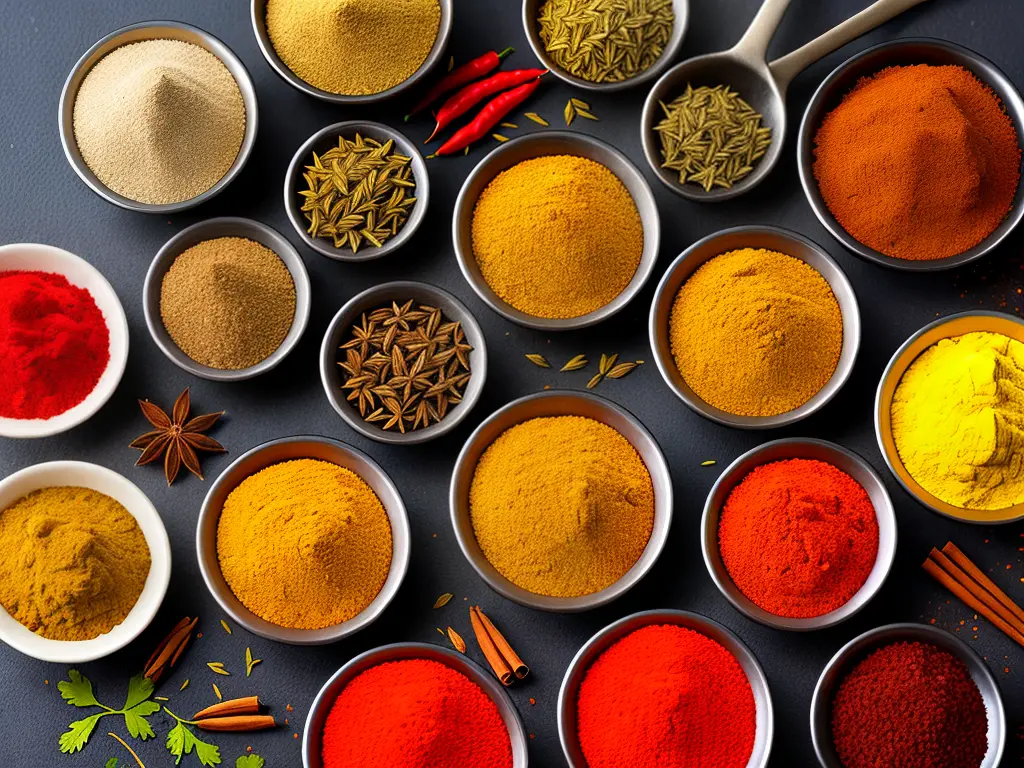
The Diversity of Chinese Cuisine
With its vast array of flavors, textures, and ingredients, Chinese cuisine is one of the most diverse culinary traditions in the Asian gastronomy. This diversity stems from the size of the country and the numerous regional variations that have developed over time. Some notable examples include Sichuan, Cantonese, and Hunan cuisine, each with its distinctive ingredients, methods, and dishes. Indeed, these regional variations, as well as the popular dishes and cooking techniques they employ, contribute significantly to the rich tapestry of Asian cuisine, a melting pot of traditions and innovation.
Sichuan Cuisine
Sichuan cuisine, also known as Szechuan or Szechwan cuisine, is famous for its bold, strong flavors and aromatic spices. The liberal use of chili peppers, garlic, ginger, and Sichuan pepper creates a unique taste profile characterized by a tingling heat that is simultaneously numbing yet flavorful. Some popular Sichuan dishes include Kung Pao chicken, Mapo tofu, and twice-cooked pork. The fiery flavors of Sichuan cuisine are part of what makes it distinct from other regional cuisines in Chinese cooking.
Cantonese Cuisine
Cantonese cuisine, on the other hand, is known for its mild, sweet flavors and an emphasis on preserving the freshness and natural flavors of ingredients. Cantonese cooks tend to favor lighter sauces and seasonings, such as soy sauce, oyster sauce, and hoisin. Cantonese dishes are often stir-fried, steamed, or braised to retain the natural flavors and textures of the ingredients. Examples of popular Cantonese dishes include Char siu (barbecued pork), dim sum, and wonton soup. This delicate balance of flavors and techniques sets Cantonese cuisine apart from its regional counterparts.
Hunan Cuisine
Hunan cuisine, like Sichuan, is known for its strong, spicy flavors, but with a different twist. Hunan dishes tend to contain more vinegar and smoking heat, often achieved through the use of fresh and dry chili peppers. The smoked and preserved ingredients common in Hunan cooking add depth and complexity to the dishes. Popular Hunan dishes include Dong’an chicken, steamed fish head with chopped chili, and smoked tofu with chili garlic sauce. This cuisine stands out due to its combination of pungent, sour, and spicy flavors.
The role of food in Asian culture extends beyond nutrition; it is a cornerstone of social life and an expression of history and cultural identity. Chinese cuisine, for example, emphasizes the harmony of flavors, visual appeal, and aroma, which are essential for creating an enjoyable and satisfying dining experience. From symbolic foods enjoyed during celebrations to comforting dishes shared among family and friends, Chinese cooking is a rich, diverse gastronomical tradition that continues to evolve and delight palates around the world.
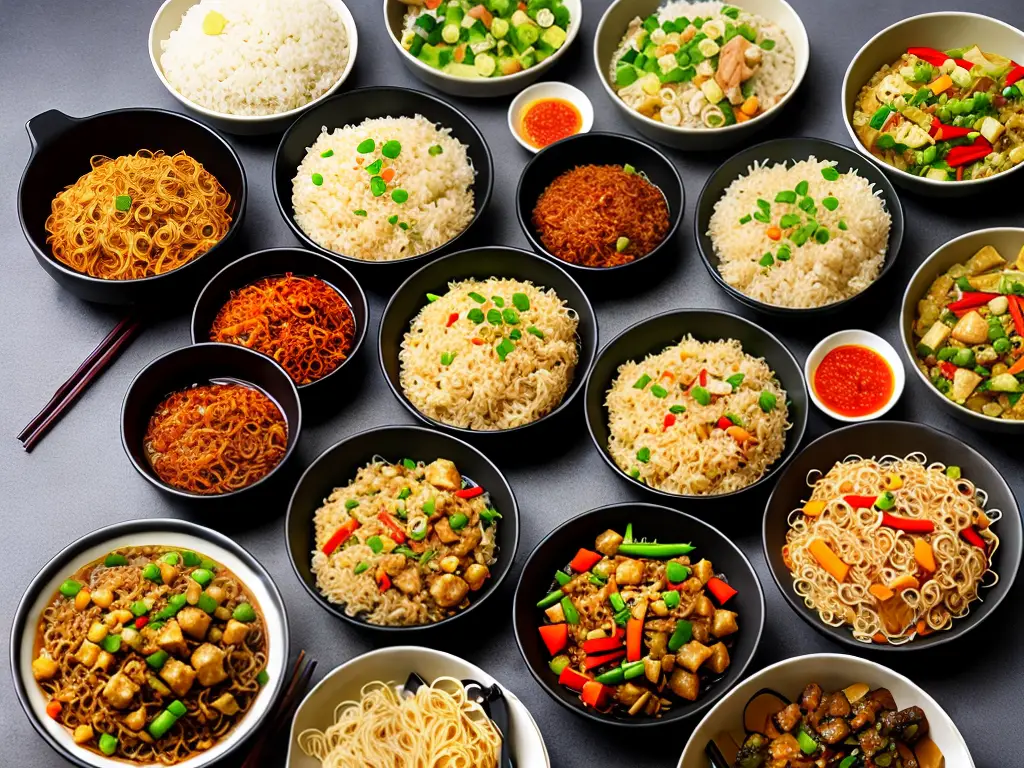
Japanese Cuisine: A Delicate Balance of Flavors and Elegance
Similarly, Japanese cuisine, known as washoku, is characterized by its delicate balance of flavors, artful presentation, and fresh ingredients. One of the most traditional and honored forms of Japanese cuisine is kaiseki. Kaiseki is a multicourse meal that highlights the distinct flavors and textures of seasonal ingredients, while also showcasing the chef’s skill in preparing and presenting each dish. This haute cuisine is deeply rooted in Japanese culture and requires the utmost attention to detail, from selecting the finest ingredients, using intricate culinary techniques, and ensuring a visually stunning presentation. Both Chinese and Japanese cuisines are testament to the rich and vibrant culinary traditions of Asia.
Sushi is another iconic element of washoku, often enjoyed both in Japan and around the world. Sushi refers to any dish that uses vinegared rice, and it is expertly combined with various ingredients such as seafood, vegetables, and even tropical fruits in modern interpretations. The highest quality sushi is crafted with utmost precision, as sushi chefs (known as itamae) dedicate years to perfecting their knife skills, rice seasoning, and ingredient combinations. Sushi can be enjoyed in many forms, such as nigiri (hand-formed rice topped with a slice of raw fish), sashimi (thinly sliced, raw fish), and rolled sushi called maki.
In addition to the elegance of kaiseki and sushi, Japanese cuisine also encompasses an array of delicious comfort foods. Ramen, a popular noodle dish, exemplifies this aspect of washoku. Originally a Chinese import, ramen has become distinctly Japanese through regional adaptations and ingredient variations. Served in a flavorful broth, these wheat noodles are often combined with toppings like tender braised pork, green onions, and marinated soft-boiled eggs. Okonomiyaki, another popular street food, is a savory pancake made with a batter of shredded cabbage and a variety of other ingredients, such as meat, seafood, or vegetables. It is cooked on a grill and typically slathered with a sweet and tangy sauce, mayonnaise, and garnished with bonito flakes and pickled ginger.
Tempura, a technique of frying ingredients in a delicate and airy batter, is another facet of Japanese cuisine that highlights the importance of both culinary skill and seasonal ingredients. Typically, vegetables and seafood are lightly coated in a mixture of cold water, flour, and egg, then fried to crispy perfection. The resulting tempura is often enjoyed with a dipping sauce called tentsuyu, made from soy sauce, mirin, and dashi broth.
Umami, considered the ‘fifth taste’ after sweet, sour, salty, and bitter, plays a crucial role in various Asian cuisines, particularly in Japanese cooking. This savory taste is derived from the presence of glutamate, an amino acid found in many foods, and is responsible for creating a depth of flavor that is considered a hallmark of washoku. A significant umami source in Japanese cooking comes from kombu, a type of seaweed often used to make dashi, a foundational broth for many dishes. In addition, other umami-rich ingredients, such as soy sauce, miso, and bonito flakes, are used to heighten the flavors of various washoku dishes, elevating them to a higher level of delicious complexity.
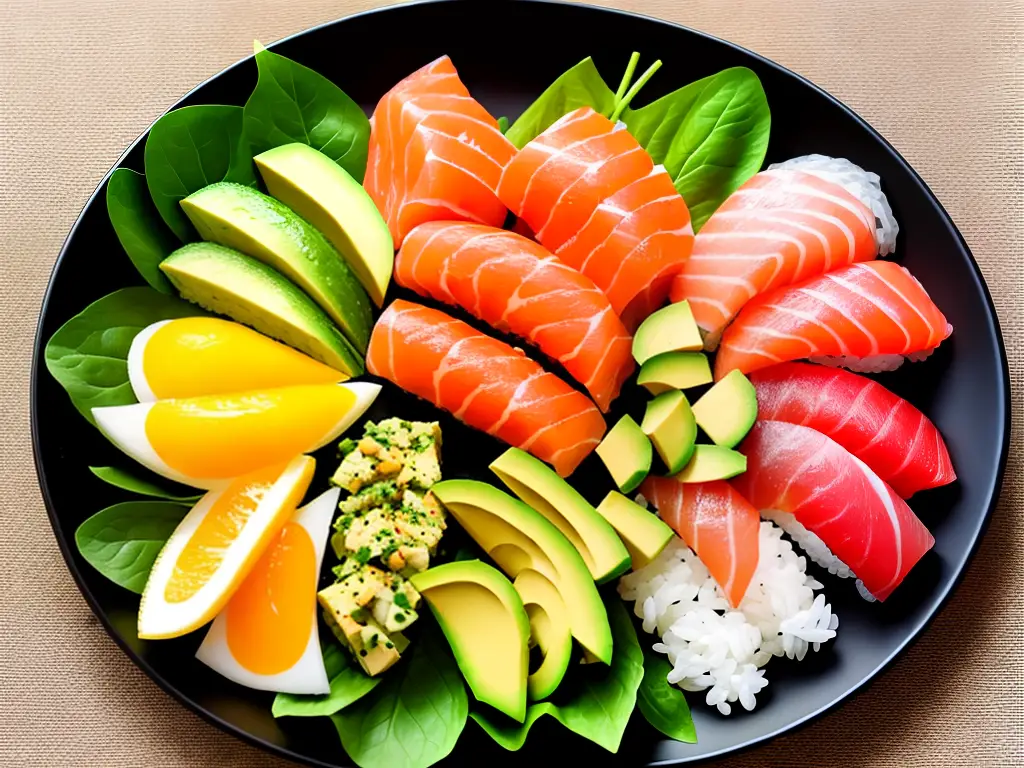
Korean Cuisine and Dining
Similarly, Korean cuisine, originating from the Korean Peninsula, incorporates bold spices, fresh flavors, and unique cooking techniques that provide a distinct taste reflecting the region’s culinary heritage. The individual dishes, as well as the customs surrounding Korean dining, emphasize communal sharing and maintaining balance among flavors and ingredients. As part of the broader Asian culinary world, Korean cuisine also draws upon elements from neighboring countries such as China and Japan, alluding to the interconnectedness of various regional dishes. This influence is reflected in the use of fermented foods, diverse meat dishes, and a variety of side dishes known as banchan, which further contribute to the diverse flavors and textures present across Asian cuisine.
One of the most recognizable aspects of Korean cuisine is the heavy reliance on fermented foods, a technique that not only adds depth of flavor to the dishes but also provides numerous health benefits. Kimchi, the iconic dish of Korean culture, is synonymous with the country’s culinary identity. Made from fermented vegetables (most often, Napa cabbage), kimchi can vary in flavor from spicy and pungent to sweet and mild, depending on the ingredients used. One commonality that ties all kimchi together is the fermentation process, which imparts a delicious tanginess and aids in preserving the food for extended periods.
Bulgogi, another well-loved Korean dish, showcases the cuisine’s signature balance of flavors and textures. Marinated in a blend of soy sauce, sugar, sesame oil, and various spices before being grilled, bulgogi exudes richness and subtly sweet undertones. Thinly sliced and typically served with rice and vegetables, this dish exemplifies the country’s affinity for tender, juicy beef dishes that are both comforting and satisfying.
Bibimbap, which means “mixed rice,” is a versatile and flavorful Korean dish that incorporates seasoned vegetables, rice, and often a fried egg or meat to create a hearty, comforting bowl meal. The dish is often customized with a variety of proteins and vegetables according to personal preferences or seasonal availability, reflecting the resourcefulness and adaptability of Korean cuisine. The vibrant colors and mixture of textures in bibimbap highlight the importance of balance, a key element in many Asian culinary traditions.
Asian cuisine is known for its remarkable flavors and dining customs, and Korean culture is no exception. Korean meals are typically characterized by communal dining, where dishes are shared among family and friends, showcasing the importance of social connections while allowing everyone to enjoy a diverse array of flavors. At the core of Korean dining is Banchan, which are small side dishes accompanying the main course and include fermented vegetables, grilled seafood, and more. The artistic arrangement of these dishes around a central plate of rice or meat emphasizes a sense of harmony and unity, embodying the importance of balance present throughout Asian culinary traditions.
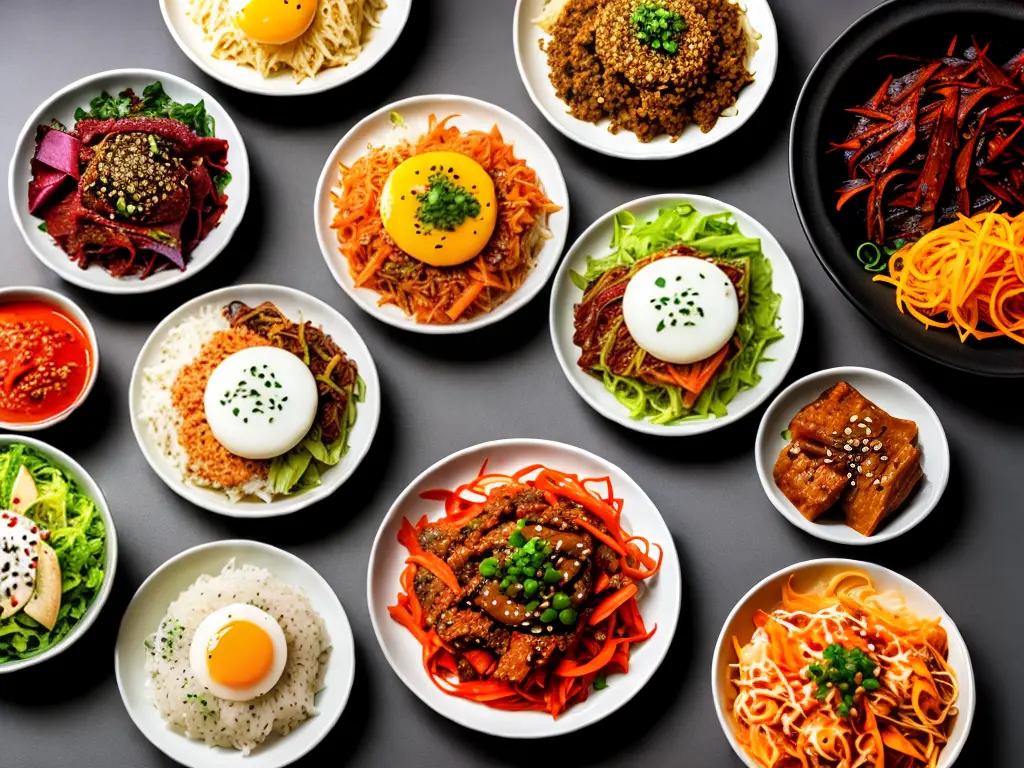
Thai Cuisine: A Delightful Mixture of Flavors
Moving on to Thai cuisine, it features a harmonious blend of spicy, sweet, sour, salty, and bitter flavors that come together to create a unique and enjoyable taste experience. A distinct characteristic of Thai cooking is the use of fresh herbs and spices like lemongrass, galangal, and kaffir lime leaves, which contribute to the fragrant aroma and bold flavors many associate with authentic dishes. Ingredients such as fish sauce and shrimp paste are also commonly used to add depth and umami, further demonstrating the balance of flavors and textures present in the wider realm of Asian cooking.
A key component in numerous Thai dishes is the use of curry pastes, which are typically made from a mixture of fresh or dried chilies, shallots, garlic, galangal, and other aromatic ingredients. These pastes are the foundation for curries such as green curry, red curry, and panang curry, which are typically cooked with coconut milk, vegetables, and a choice of protein like chicken, beef, or tofu. The heat level of each curry can vary depending on the type and amount of chilies used, with green curry generally being the spiciest while yellow curry is milder.
Thai cuisine also heavily features rice as a staple, which not only includes the familiar jasmine rice but also various types of sticky or glutinous rice. Jasmine rice is often served alongside dishes like green curry, while sticky rice is more commonly found in dishes originating from the northeast region of Thailand, such as som tum (green papaya salad) and larb (minced meat salad). The prevalence of rice in Thai cuisine is reflective of its importance across Asian cultures as both a sustenance and a way to absorb and complement the flavors of dishes.
Pad Thai, one of Thailand’s most famous dishes, showcases the lovely balance between sweet, sour, and savory flavors that Thai cuisine is known for. This stir-fried noodle dish traditionally includes rice noodles, eggs, tofu, tamarind juice, fish sauce, and chili; it is garnished with crushed peanuts, bean sprouts, and lime wedges. The dish’s global popularity has led to many variations, including the addition of shrimp, chicken, or vegetables.
Another well-known Thai dish that highlights the distinct flavor profile of the cuisine is tom yum goong, a hot and sour shrimp soup. This soup is known for its unique combination of lemongrass, galangal, kaffir lime leaves, chili, and lime juice, which produces a tangy, refreshing broth. Tom yum goong is a great example of a Thai dish that has gained recognition beyond Thailand’s borders, reflecting the growing demand for diverse, authentic Asian cuisine around the world.
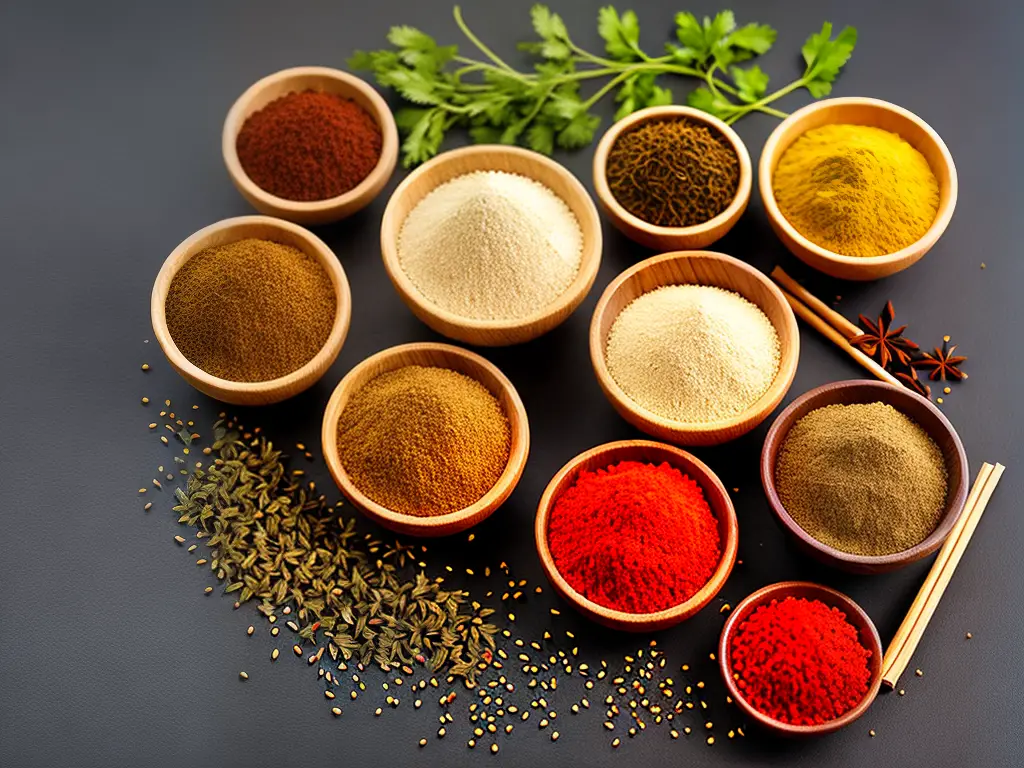
Delicious and Diverse: A Journey Through Indian Cuisine
Moving beyond Thailand, India, with its vast and diverse culinary heritage, also offers a world of flavors and cooking techniques that make it an integral part of Asian cuisine. Indian food is an assortment of regional dishes that vary significantly based on geography, climate, and local ingredients. From the tropical flavors of South Indian cuisine to the smoky, spicy specialties of North Indian dishes, there is truly something for every palate in this rich and varied culinary landscape.
One of the staples of Indian cuisine is dal, a delicious and nutritious dish made from lentils or other legumes, often served with rice or flatbread. Dal is not just a single recipe but a broad category with endless variations based on the types of lentils, vegetables, and spices used. Another widely known Indian dish is curry, a spicy and aromatic stew-like preparation that can feature vegetables, meat, or seafood. Curries typically consist of a base made from onions, tomatoes, and a blend of ground spices, known as masala. The sheer variety of Indian curries is staggering, with each region offering a unique mix of flavors and ingredients.
Biryani is a popular dish that represents the best of Indian cuisine, layered with flavorful rice, marinated meat or vegetables, and an array of spices. The key to an excellent biryani lies in the delicate balance of spices, which can include cinnamon, cloves, cardamom, and saffron. Biryani has many regional variations, such as the famous Hyderabadi biryani from Southern India, distinguished by its use of basmati rice and particular spice combinations.
With a large percentage of the Indian population following a vegetarian diet, there is no shortage of vegetarian dishes in Indian cuisine. One classic example is paneer, a soft Indian cheese that can be used in a variety of ways, including being served in curries or wrapped in flatbreads. Chana masala, a chickpea curry, and bhindi masala, an okra dish, are other popular vegetarian options found across India. Additionally, Indian street food offers an array of vegetarian delights, such as pani puri, chaat, and pakoras.
Indian cuisine is known for its vast array of dishes, cooking techniques, and diverse spices and herbs that help create distinctive and vibrant flavors. Commonly found spices include turmeric, ginger, coriander, cumin, mustard seeds, and red chili powder, while herbs such as mint, cilantro, and fenugreek leaves are used for flavor and garnish. These spices and herbs also hold Ayurvedic and medicinal values, adding to the cultural significance of Indian cuisine. Its diversity and richness captivate food lovers worldwide, making it a vital player in Asian cuisine.
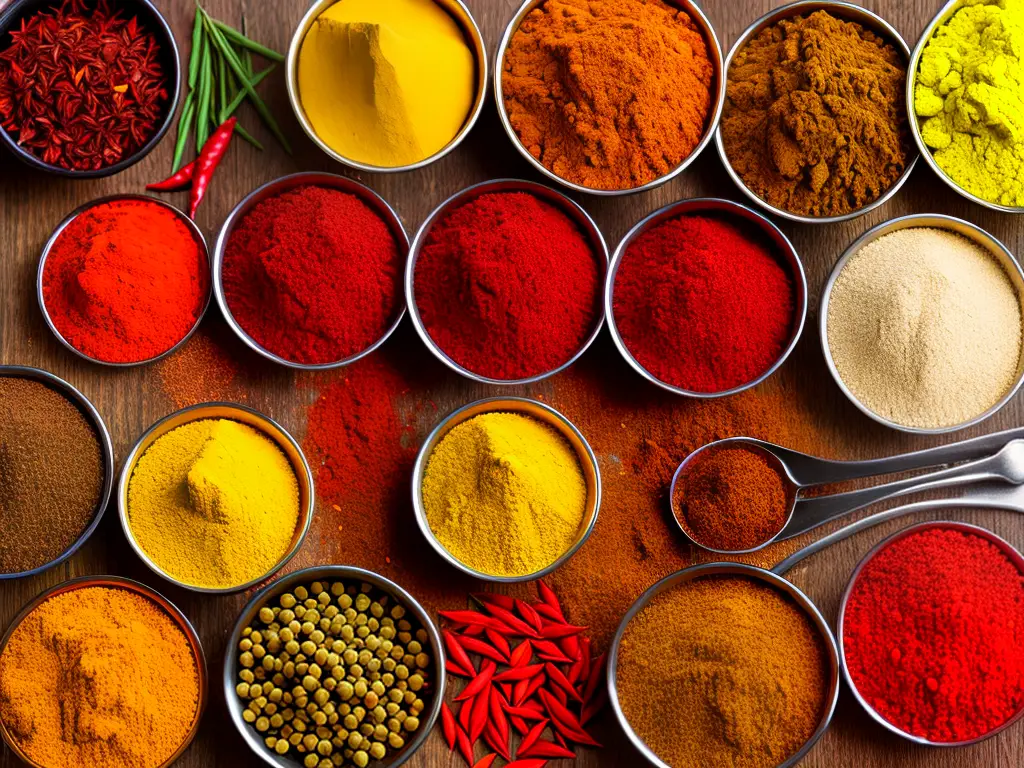
The Unique Flavors of Filipino Cuisine
Moving further east, Filipino cuisine reflects the diverse and colorful history of the Philippines, with both indigenous and foreign influences at play. Malay, Chinese, Spanish, and American culinary traditions have all shaped the cooking techniques and flavors of Filipino food, resulting in a unique fusion of exotic flavors and ingredients. The combination of these different culinary heritages into a distinct culinary identity further showcases the vast diversity and richness found within the world of Asian cuisine.
Adobo, one of the most well-known Filipino dishes, is a perfect example of such fusion. This dish is made by marinating and simmering meat, usually chicken or pork, in a mixture of soy sauce, vinegar, garlic, bay leaves, and peppercorns. The sweet-sour-salty taste of adobo reflects the blending of Chinese soy sauce, Spanish seasoning, and the native practice of using vinegar and spices as a means of preserving food in a tropical climate.
Sinigang, another popular Filipino dish, is a sour soup made with tamarind, tomatoes, and various vegetables, simmered with a protein such as pork, beef, shrimp or fish. The defining characteristic of this dish is its tangy and savory flavor, which comes from the tamarind base. Regionally, other souring agents like guava, unripe mango, or calamansi (a local citrus fruit) may be used in place of tamarind, showcasing the adaptability and resourcefulness of Filipino cooks.
Lechon, a whole roasted pig, is considered the ultimate feast centerpiece in Filipino celebrations. The pig is marinated, skewered on a bamboo pole, and slow-roasted over an open flame for hours, basting it in its own fat until the skin becomes golden and crispy. The succulent meat is usually eaten with a sauce made from the pig’s liver, breadcrumbs, vinegar, sugar, and spices. The lechon-making process, as well as the grand communal feasts centered around it, highlight the Filipinos’ love for pork and the strong sense of community shared by people in the archipelago.
The delightful Filipino cuisine emphasizes the importance of rice as a staple food, which is an undeniable characteristic of many Asian countries. Rice often accompanies meals and is even used in desserts, such as kakanin (traditional rice cakes), showcasing the versatility of this ancient grain. Another key principle that guides Filipino cooking is the balance of flavors, particularly the interplay of sweet, sour, salty, and bitter tastes. This combination, known as “linamnam,” captivates the palate and gives Filipino cuisine its unique identity among other Asian cuisines.
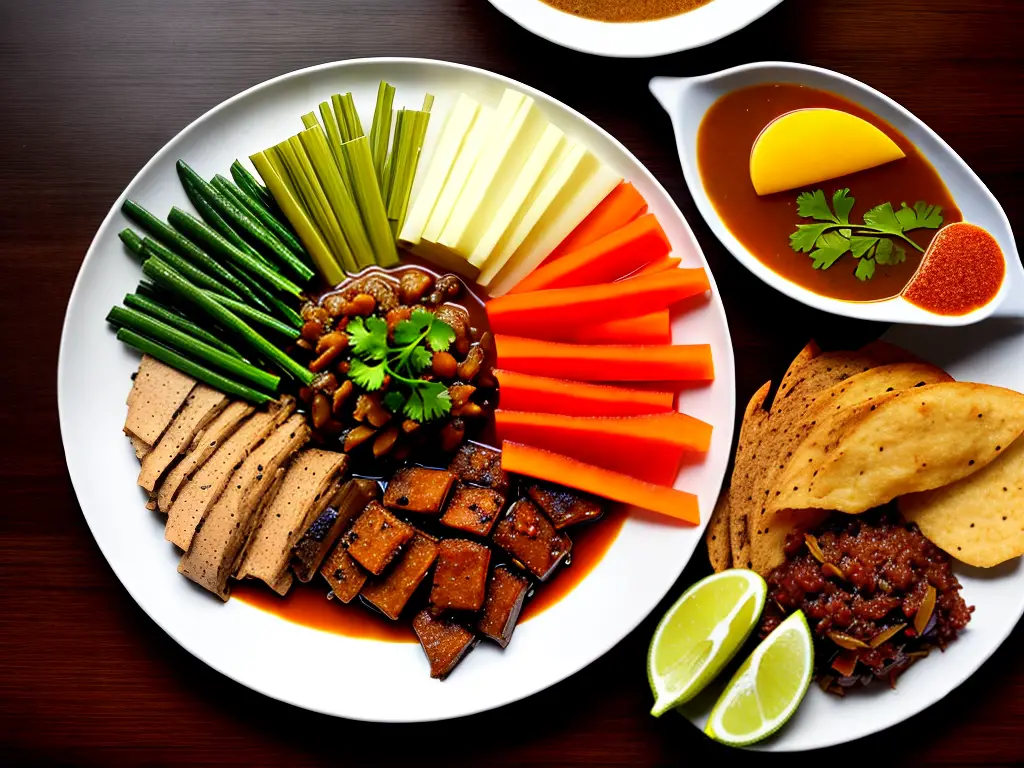
The Diversity of Vietnamese Cuisine
While admiring this unique identity of Filipino cuisine, it’s important to notice how Vietnamese cuisine stands tall among the rich food cultures of Asia, offering some of the most fragrant and delicate flavors in the region. The cuisine is distinctly characterized by its reliance on fresh herbs, zesty spices, and the widely-used fish sauce, which forms the backbone of many dishes. This unique culinary approach draws from the nation’s abundant natural resources, with lush rice paddies, plentiful fish, and a variety of tropical fruits and vegetables. Thus, showcasing the diversity and richness of flavors prevalent in Asian cuisine.
One of the most iconic and popular dishes in Vietnamese cuisine is phở, a steaming hot bowl of noodles submerged in a rich and aromatic broth. This comforting dish typically features thinly-sliced beef or chicken, tender rice noodles, and a medley of herbs such as Thai basil, cilantro, and lime. Phở is enjoyed by people of all ages in Vietnam and can be found at street food vendors, casual eateries, and upscale restaurants around the country.
Another Vietnamese staple is bánh mì, a fusion of French and Vietnamese flavors packed into a crispy baguette. This delectable sandwich typically consists of marinated meat – such as pork, chicken or pâté – and a generous helping of pickled vegetables like carrots, daikon, and cucumber. What sets bánh mì apart from other sandwiches is the addition of fresh herbs such as cilantro and mint, as well as a spicy kick from sliced jalapeños or a smear of chili paste.
Spring rolls, or gỏi cuốn, are another popular Vietnamese dish that showcases the cuisine’s emphasis on fresh ingredients. These delicate rolls are made by wrapping a thin layer of rice paper around a selection of vegetables, herbs, and either cooked shrimp or pork. Traditionally served with nuoc cham – a tangy and slightly sweet dipping sauce – these appetizing bites beautifully embody the refreshing and light flavors typical of Vietnamese fare.
Vietnamese cuisine offers a captivating culinary journey, reflecting the nation’s distinct geography and history. With a tapestry of regional flavors and unique dishes, food lovers worldwide find it intriguing and appealing. For instance, the central city of Huế is known for its spicy and intricate dishes influenced by the royal court, while the southern region’s dishes are sweeter and bolder due to the abundant fruit and coconut groves.
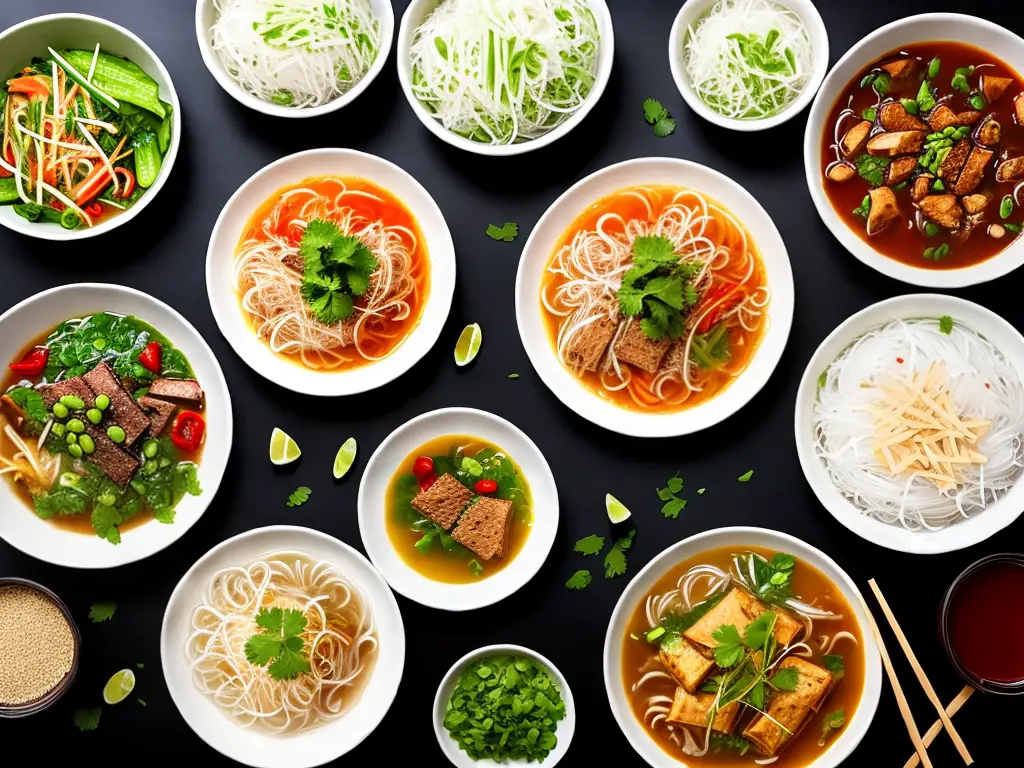
Indonesian and Malaysian Cuisine
A similar gastronomic adventure can be found in Indonesian and Malaysian cuisine, showcasing the rich cultural and historical influences of these Southeast Asian nations. The vibrant diversity of these regions is reflected in the skillful blending of indigenous ingredients with aromatic spices and cooking techniques from around the world. From Vietnamese to Indonesian and Malaysian flavors, exploring Asian cuisine is always a delightful experience.
One of the most iconic dishes representing Indonesian and Malaysian cuisine is satay, a popular street food comprising skewered and marinated meat grilled to perfection, then served with a mouthwatering peanut sauce. The dish marries influences from the Middle East, China, and India, while incorporating regional ingredients such as lemongrass, tamarind, and turmeric. Indonesian satay often features more complex marinades and variations in ingredients compared to Malaysian satay, which traditionally uses simpler spices.
Another exemplary dish of Indonesian and Malaysian cooking is rendang, a rich, slow-cooked dish that includes meat, coconut milk, and a medley of fragrant spices like ginger, galangal, cardamom, and cinnamon. Hailing from the Minangkabau ethnic group in Indonesia, rendang has become a beloved dish throughout the region, as well as in Malaysia. This delectable curry is typically served at festive occasions and can be enjoyed with steamed rice or ketupat, a traditional rice cake wrapped in palm leaves.
Nasi goreng, or fried rice, is an Indonesian favorite that has become an Indonesian national dish but is also very popular in Malaysia. Typically served as a complete meal, nasi goreng consists of rice stir-fried with a range of ingredients, including meats, vegetables, and spices like kecap manis (sweet soy sauce), shallots, garlic, and fresh chilies. The dish is usually garnished with fried egg, prawn crackers, and sometimes sliced cucumber and tomato. Offering endless variations, this versatile dish can be modified to suit individual tastes and preferences.
Indonesian and Malaysian cuisine is not complete without mentioning the plethora of diverse dishes that reflect the unique cultural heritage of the region. Examples include Indonesian gado-gado, a vegetable salad topped with crunchy shrimp crackers and smothered in peanut sauce, and Malaysian roti canai, an Indian-inspired flatbread served with aromatic curry. As you delve into the richness and complexity of these culinary traditions, you will appreciate how centuries of trade, migration, and cultural exchange have shaped their flavors.
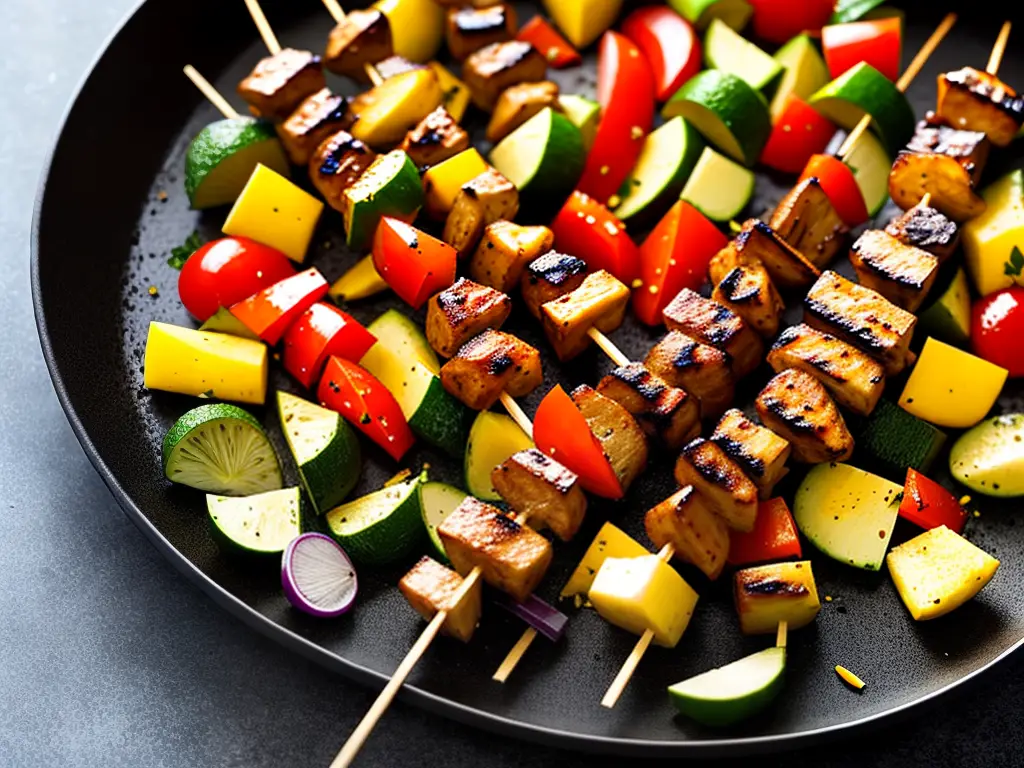
The Diversity of Asian Cuisine
Furthermore, Asian cuisine encompasses other rich culinary traditions found in numerous countries such as China, Japan, Korea, India, and throughout Southeast Asia. These regions share core principles in their recipes and cooking techniques that often emphasize the use of fresh ingredients, bold flavors, and a balance between various taste profiles. As you continue to explore the vast world of Asian cuisine, you will find that Indonesian and Malaysian dishes are just a small but significant part of the gastronomic landscape, where each nation has its own distinct flavors and traditions to offer.
One common aspect in many Asian cuisine dishes is the use of a wok, a versatile, high-sided cooking pan that allows for stir-frying, deep-frying, and even boiling.
Chinese Cuisine
In Chinese cuisine, ingredients like soy sauce, hoisin sauce, rice wine vinegar, and oyster sauce are frequently used to create savory, complex, and umami-rich flavors. Cooking techniques such as stir-frying and steaming are widespread, which not only helps to retain the nutrients and bright colors of vegetables but also often results in a lighter and healthier dish.
A popular Chinese dish, Kung Pao chicken, is an excellent example of these techniques, featuring stir-fried chicken, vegetables, and peanuts tossed in a savory sauce with a hint of spice.
Japanese Cuisine
Japanese cuisine is characterized by its simplicity and the emphasis on the natural flavors of ingredients. Common staples include sushi rice, soy sauce, and miso paste, which are used in various dishes like sushi, ramen, and teriyaki. A wide array of fresh seafood is often used in Japanese dishes, such as sashimi and various sushi rolls. Tempura, another popular Japanese dish, showcases delicate deep-frying techniques where seafood and vegetables are coated in a light batter and fried to a perfect golden crisp.
Korean Cuisine
Korean cooking focuses on the harmony of flavors and often centers around rice, vegetables, and meats. The use of fermented ingredients, such as kimchi and doenjang (fermented soybean paste), is common in Korean dishes, adding depth and umami to the recipes.
One iconic Korean dish is bibimbap, a colorful rice bowl topped with sautéed vegetables, meat, a fried egg, and spicy gochujang sauce. The dish can be easily customized, showcasing the versatility and simplicity of Korean cuisine.
Indian Cuisine
In contrast, Indian cuisine is known for its bold flavors, aromatic spices, and the use of herbs, like cilantro and mint. A variety of legumes, rice, and vegetables are often incorporated, making Indian cuisine very diverse and suitable for both vegetarian and non-vegetarian diets.
Ingredients like cumin, turmeric, and garam masala are widely used and can be found in popular dishes such as curry, biryani, and tandoori. One versatile cooking technique present in Indian kitchens is the use of a tandoor, a traditional clay oven designed for high-heat cooking, perfect for dishes like naan bread and tandoori chicken.
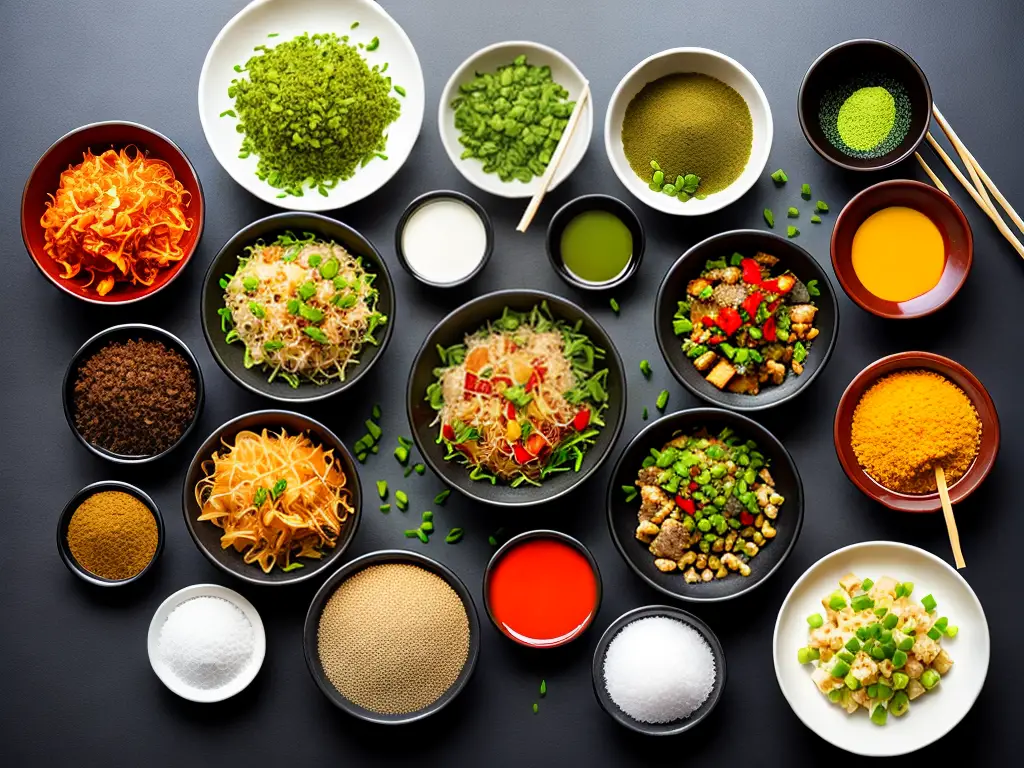
As we conclude our culinary exploration of Asian cuisine, it is clear that the richness, variety, and techniques involved in this vast gastronomic landscape are truly awe-inspiring. From the delicate balance of flavors in Thai dishes to the refinement of Japanese kaiseki, the boldness of Sichuan cuisine to the comforting warmth of Indian curries, each region has its unique offerings bound by a common thread: the love and passion for food that transcends borders. It is through understanding and appreciating these diverse cuisines that we are not only nourishing our bodies but also fostering connections and celebrating the cultural heritage of Asia itself.